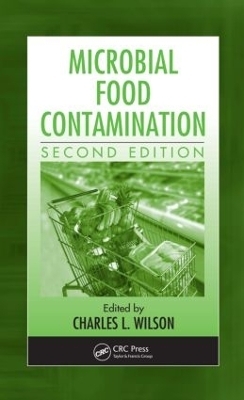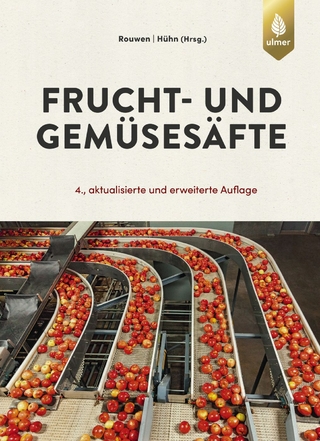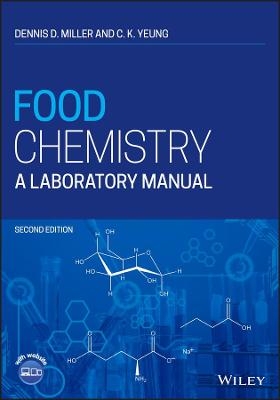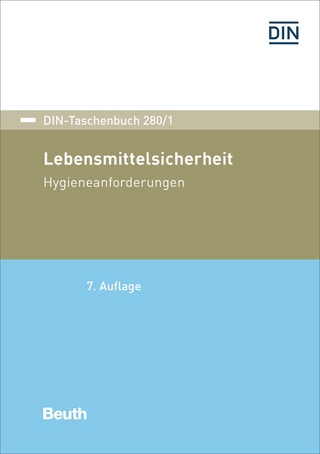
Microbial Food Contamination
Crc Press Inc (Verlag)
978-0-8493-9076-0 (ISBN)
Divided into five parts, Microbial Food Contamination, Second Edition looks at emerging foodborne human pathogens andcomprehensively evaluates the microbiology, biochemistry, detection, risk, and threat of foodborne illness in today’s global market. The first section introduces new insights into the pathogenic effect of E. coli, viral diseases, and protozoan parasites, as well as prions and other zoonotic diseases. It discusses mycotoxins and aflatoxins, particularly the carcinogenicity of aflatoxin B1 and the chemoprevention of liver cancer.
Detection, Monitoring, and Control
Presenting recent advances in the detection and monitoring of foodborne pathogens, section two reviews rapid electrochemical biosensors, new methods to detect prion diseases, and the use of polymerized chain reaction (PCR) for detection, identification, and typing of microorganisms. Section three examines control and prevention measures including Kosher and Halal food laws, and the use of naturally occurring antimicrobials, irradiation, and other physical control strategies. It also considers the genetic and biochemical control of aflatoxigenic fungi.
International Regulation and Trade
Globalization reduces traditional geographic borders that once prohibited pathogens from spreading and increases the risk of transnational outbreaks. The impact of this trend on international trade is evaluated in section four with a look at the implications of mad cow disease on the beef trade. It also provides an overview of programs to mitigate contamination such as the Codex Alimentarius and the International Food Safety Authorities Network.
Bioterrorism
Addressing the most frightening aspect of microbial contamination, section five explores bioterrorism and the different chemical, radiological, and biological agents that could be employed to deliberately contaminate food. Contributors take a critical look at present food protection strategie
Charles L. Wilson
Instances and Nature of Microbial Food Contamination. PulseNet and Emerging Foodborne Diseases. Pathogenic Mechanisms of the Enterohemorrhagic Escherichia coli—Some New Insights. Viruses and Protozoan Parasites in Food. Prions in the Food Chain. Toxicity of Fumonisins, Mycotoxins from Fusarium verticillioides. Molecular and Biochemical Mechanisms of Action of Acute Toxicity and Carcinogenicity Induced by Aflatoxin B1 and of the Chemoprevention of Liver Cancer. Detecting and Monitoring Microbial Food Contamination. Rapid Methods for Detecting Microbial Contaminants in Foods: Past, Present, and Future. Rapid Electrochemical Biosensors for the Identification and Quantification of Bacteria. Applications of the Polymerase Chain Reaction for Detection, Identification, and Typing of Food-Borne Microorganisms. Advances in Prion Detection. Control of Microbial Food Contamination. The Kosher and Halal Food Laws and Potential Implications for Food Safety. Control of Foodborne Pathogens and Spoilage Microorganisms by Naturally Occurring Antimicrobialsm. Intervention Technologies for Food Safety and Preservation. Genetic and Biochemical Control of Aflatoxigenic Fungi. Microbial Food Contamination and International Trade. Mad Cow Disease and International Trade. Use of Risk Assessment as a Tool for Evaluating Microbial Food Contaminants. Zoonotic Diseases Risk Assessment and Mitigation. The Codex Alimentarius: What It is and Why It is Important. The International Food Safety Authorities Network. Bioterrorism and Microbial Food Contamination. Biological Contamination of Food. Index
| Erscheint lt. Verlag | 8.10.2007 |
|---|---|
| Verlagsort | Bosa Roca |
| Sprache | englisch |
| Maße | 156 x 234 mm |
| Gewicht | 975 g |
| Themenwelt | Technik ► Lebensmitteltechnologie |
| ISBN-10 | 0-8493-9076-1 / 0849390761 |
| ISBN-13 | 978-0-8493-9076-0 / 9780849390760 |
| Zustand | Neuware |
| Haben Sie eine Frage zum Produkt? |
aus dem Bereich


